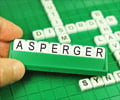The risk for autism spectrum disorders (ASD) may be influenced by genetic variations in mitochondrial DNA determined by ancient migrations.
- Mitochondria are the powerhouses of the cells, generating energy for various cellular functions
- Scientists have suggested a possible link between variations in mitochondrial DNA and autism
- The theory could change the approach to the development of treatments for autism
The scientists suggest that the genetic variations in the mitochondria may play a role in the development of autism spectrum disorders (ASD). Autism spectrum disorders are a group of development disorders in which the patients suffer from difficulty with communication and social interaction along with repetitive or restrictive behavior. Patients have focused but long-lasting interests in certain topics. They have a problem with conversations but can talk at length on their topic of interest. They get upset if their routines or settings are suddenly changed. They, however, usually have above average intelligence and may even excel in the fields of mathematics, art, music and science. Genetic and environmental factors have been implicated in increasing the risk of suffering from ASD. Medications may be used to control symptoms of irritability, aggression, anxiety, depression, hyperactivity and attention problems to some extent.
The scientists obtained the genetic data for their study from the Autism Genetic Resource Exchange (AGRE). The study was conducted on the data obtained from 1,624 patients and 2,417 healthy parents and siblings from 933 families.
The scientists found that Europeans with the haplogroups I, J, K, X, T and U had a higher risk of ASD as compared to those with HHV, which is the most common European haplogroup. The risk was also higher in those with the Asian and Native American haplogroups A and M.
The increased risk for ASD has a possible explanation. The variations in the mitochondria can affect the brain and cause an imbalance between the excitation and inhibition of brain activity thereby predisposing to ASD.
Taking the findings of the study further, the scientists suggest that metabolic treatments could be developed and evaluated in the future for their possible benefits in this group of patients.
- Autism Spectrum Disorder - (https://www.nimh.nih.gov/health/topics/autism-spectrum-disorders-asd/index.shtml)
- "Association between Mitochondrial DNA Haplogroup Variation and Autism Spectrum Disorders," JAMA Psychiatry, online Aug. 23, (2017). http://doi.org/10.1001/jamapsychiatry.2017.2604
Source-Medindia












